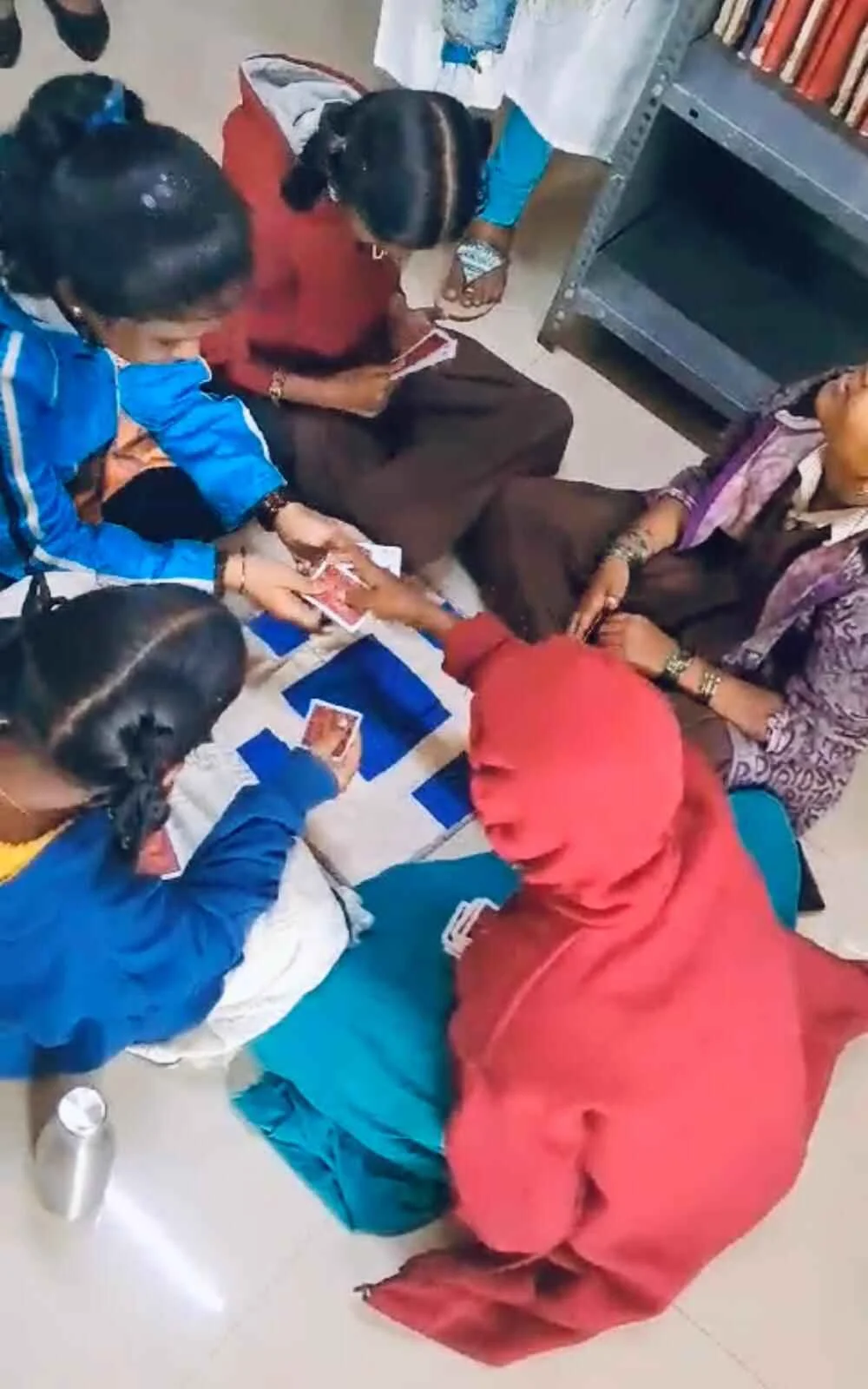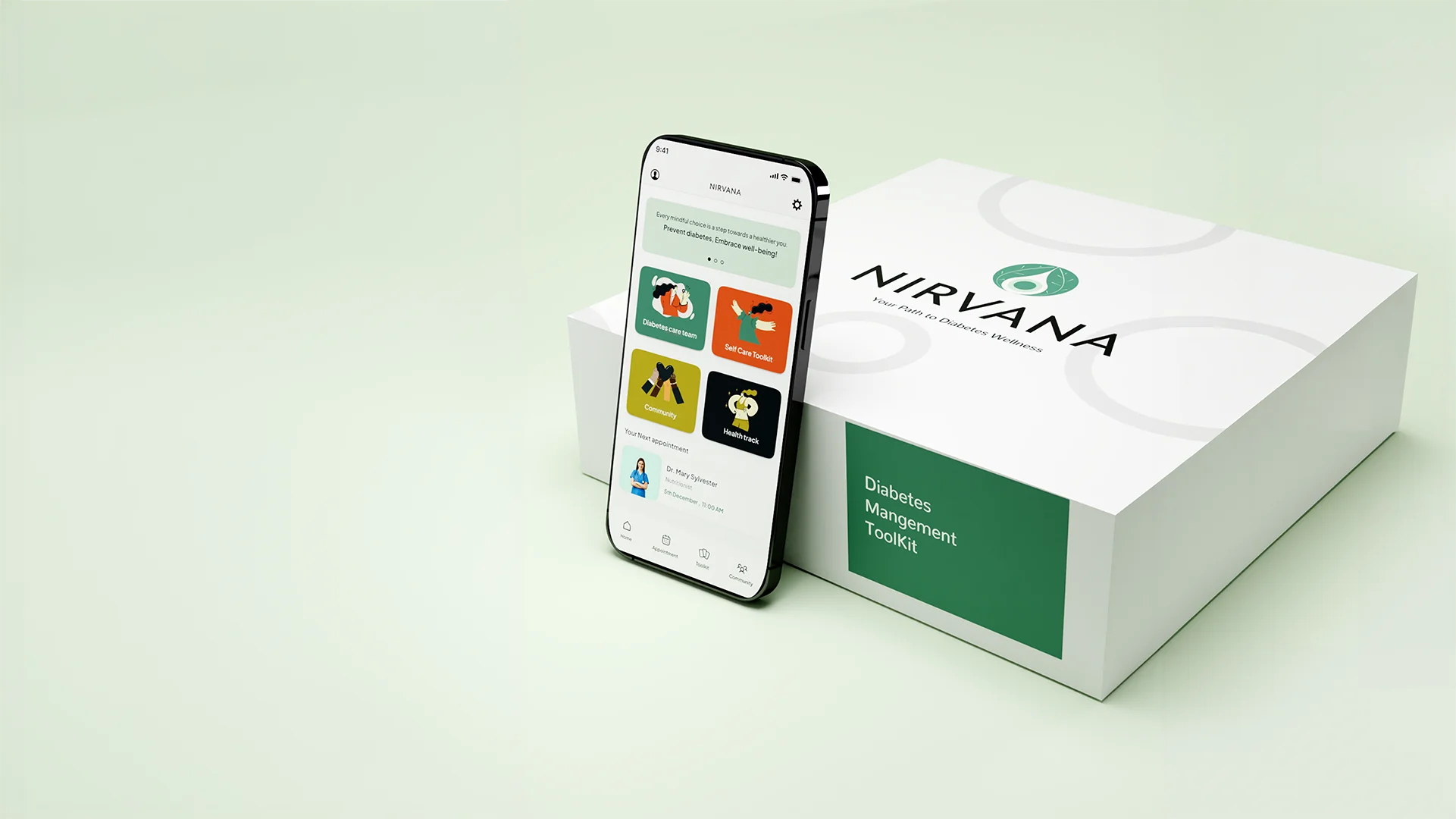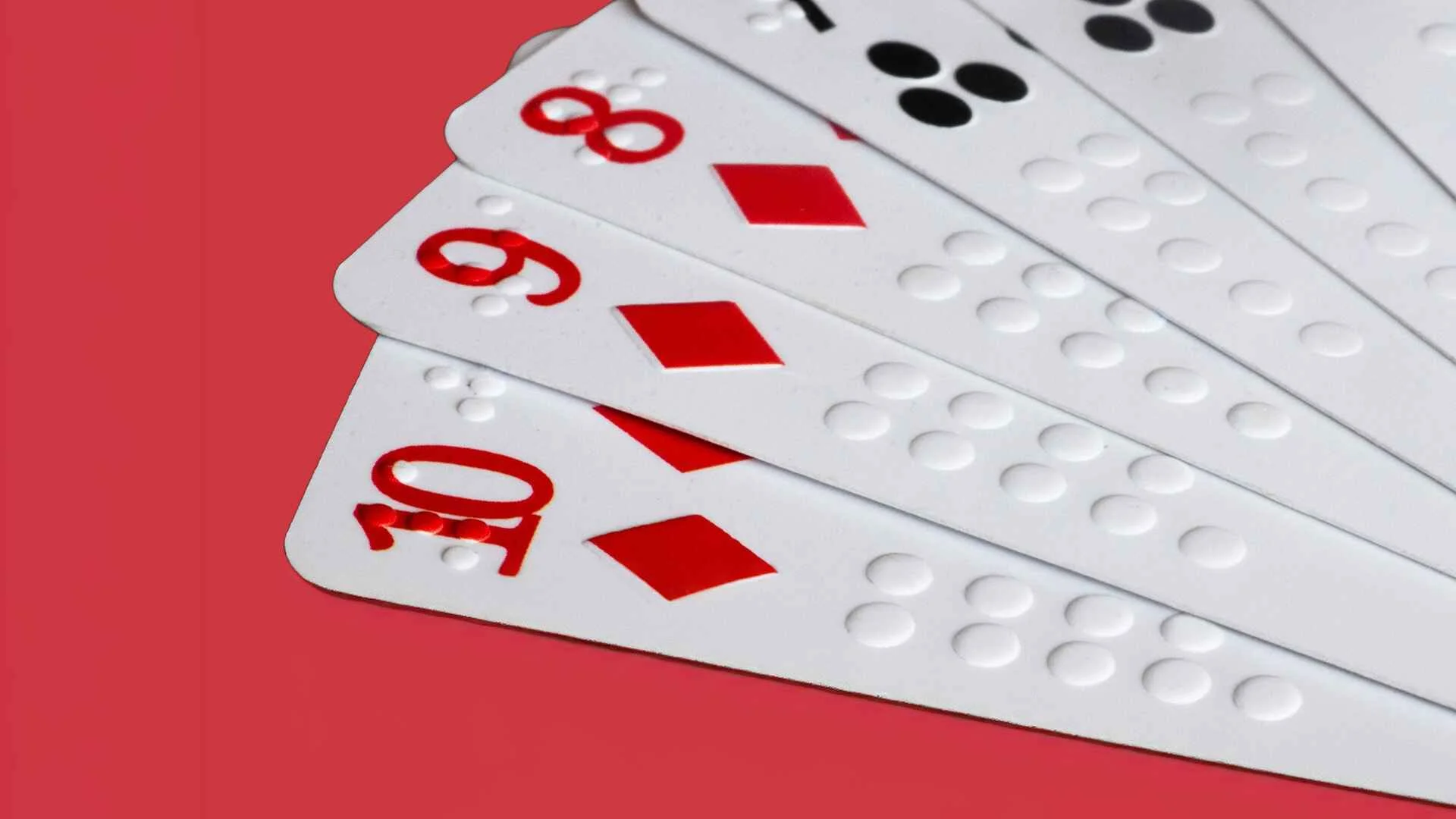Junior Braille Playing Cards
Company
Microsoft Research, Bangalore
My Role
Research Intern
User Research
Prototyping/Mockups
Brand Development
Package Design
Production Techniques
Cost Optimization
Stakeholder Collaboration
Team
Manohar Swaminathan, Divya Prabha, Gesu India, Vidya Y from Microsoft Research + Vision Empower NGO
Tools
Adobe XD
Illustrator
Photoshop
Indesign
Duration
1 Year, 2020 - Ongoing
The Challenges
Numeracy is an essential skill that we use in our everyday lives, which influence our interactions with the world around us. Many educational initiatives are inaccessible to visually impaired children or rely on expensive technology. This creates a gap in accessible, affordable resources for visually impaired children in schools.
The Approach
The project's approach, known as Ludic Design for Accessibility, keeps play and playfulness central to every accessibility solution. The success of this design philosophy is measured by parameters that are amenable to measurement, which collectively form a discrete set of objectives. This approach effectively decouples these objectives from the holistic complexities of living.

Our Partner
Vision Empower is a nonprofit organization focused on empowering children with visual impairments through inclusive education initiatives.
How might we develop Computational Thinking (CT) skills among children with visual impairment?
Research
One of the interventions being explored in schools for visually impaired children uses playing cards as a means to develop foundational numeracy skills. This hypothesis arises from the qualitative inputs from a sample of STEM experts that card games offer an inexpensive, easily affordable, and interesting way of learning numeracy concepts and attitudes towards future learning of Mathematics.
Below are the field visit videos showcasing visually impaired children learning through card games.
Visually impaired children are counting the numbers on the cards by using tactile bindis as markers to indicate the value of each suit.
In a "Count and Clap" game, children are given two cards. They add the numbers on the cards, then clap the corresponding number of times. The other kids have to guess the total number based on the claps.
Visually impaired children are using cards in creative ways, like pretending they’re flying a plane or making card fans, all while having fun.
findings
1. The Need for Different Levels of Playing Cards
It was found that even at the same age, different children absorb information and engage in the game at different levels. Therefore, it was necessary to separate the children into different groups so that play is both interesting enough to keep the fast learners engaged as well as provided a thorough grasp of the basics to the others.
2. The necessity of Making Different Groups
The games have to be designed in such a way that they build children’s numeracy skills up from the basics, rather like having different levels in virtual gaming. How fast children proceed through the games depends on their age, level of prior exposure to cards, level of braille reading, and the duration of enrollment in the schools.
3. Dealing and Drawing
Cards are now dealt directly into a child’s hands rather than in front of them for ease of location. A drawing deck has to be placed in the center so that cards do not get knocked down accidentally. The deck can have 2 compartments: one for the drawing deck and one for the playing deck. The children can also easily check the cards their friends have put down.
4. Collaborative Play
The card games promoted student collaboration and engagement in a play-based learning environment. The students constantly taught each other how to play, introduced rules to children who were absent in the previous session, and helped others with their cards wherever they deemed it necessary. Therefore, certain collaborative games rather than competitive games also became popular among players.
Ideation/ Development
Prototype Phases
The development of Junior Braille Playing Cards involved iterative prototyping to perfect the suit size, shape, Braille placement, emboss height, and card size for accessibility. These cards were designed to ensure ease of use for young players and clear readability for the visually impaired children, while maintaining the integrity of traditional gameplay and promoting inclusivity.
Printing Emboss Techniques
Design for manufacturing involves efficient design during the product development stage and finding the appropriate manufacturing methods to achieve the best quality and reduce costs.The manufacturing process involved product design, selecting production methods and techniques, tooling, costing, and conducting a usability study.
Three printing techniques were explored:
- Spot UV
- Double UV
- Blind Emboss
Findings
After evaluating different embossing techniques, it was determined that blind embossing was the best option for the project’s needs. Fourteen embossing dies were made for 42 playing cards. The embossing dies are made of sturdy metal, which can be reused many times and retained for a longer period. Hence, it was a one-time investment for the tooling. This method of embossing and printing has been cost-efficient compared to any other process, further enabling the project to provide the playing cards for visually impaired children at affordable pricing.




Junior Braille
Playing Cards
A thoughtfully designed deck tailored to help visually impaired children learn numeracy skills and enjoy card games!
Apart from the standard printed side, Junior Braille Playing Cards have four tactile elements: a number sign followed by a number on the top left corner, the capital sign with the first letter of the suit on the top right corner, a redesigned representation of the suit, and a dotted representation of the number. These cards are all inclusive and can be used by those with vision and without, whether they can read braille or not.

We developed a cost-effective game board crafted from durable cloth. To produce these, we partnered with a local NGO that empowers women through skilled stitching. We ordered 200 pieces, supporting the artisans and providing visually impaired children with an engaging and accessible tool for learning and play.
Numeracy Concept Games Curriculum
Some of the games that enhance children's numeracy skills and concepts.
| Games | Numeracy Concepts |
|---|---|
| Counting cards | Counting, associating numbers with objects |
| Distributing a certain number of cards to others | Counting, addition, and subtraction, the concept of total, comparison of numbers (more, less and same) |
| Gathering all cards of a certain suit | Number recognition, pattern identification, skip numbers, sorting |
| Go fish | Number recognition, concept of equal |
| Biggest and smallest number possible out of a set of 3 cards | Comparison of numbers, place value |
| Raise to 27 | Addition, logic, drawing a card from the deck |
| Last man standing | Place value and face value |
| Sequence | Pattern recognition, sequencing |
User Test
(Children's Progress Over 6 Months)
- Children exhibited a rapid proficiency in reading Braille, and easily recognized both the suit and numerical elements on the cards.
- The children showed independent understanding of the card's orientation, holding them correctly without any external guidance.
- A child initially unfamiliar with Braille began recognizing some Braille characters after becoming familiar with the suit shapes and counting dots on the cards.
- Those already familiar with braille primarily focused on reading the braille located at the top left and right corners of the cards.

The Impact
- Launched Junior Braille Playing Cards as part of a computational thinking curriculum using the Ludic design approach for grades 3-8 in 105 schools across 13 states.
- Reached and positively impacted 2,154 students, enhancing their accessibility to education and learning experiences.
- The successful implementation sets the stage for potential expansion, ensuring a lasting positive impact on inclusive education initiatives.
Reflection
Empathy in Design: Engaging directly with visually impaired children revealed nuanced needs that couldn’t have been anticipated. This experience taught me that true empathy requires immersing myself in the user’s world, ensuring that the Junior Braille Playing Cards reflect their lived experiences rather than mere assumptions.
Accessibility as a Principle: Designing the cards with accessibility in mind from the outset created a universally enriching experience, effectively blurring the lines between ability and disability. This approach allowed visually impaired children and their families to share in the joy of play.
Iterative Design Process: The iterative design process highlighted the importance of humility and resilience. Each round of feedback exposed flaws and guided improvements, demonstrating that co-creation and openness to failure are essential for creating innovative and effective solutions.
The Power of Play: Observing children interact with the cards underscored the essential role of play in exploration and connection. The project illustrated how play can bridge educational gaps, fostering not only learning but also social bonds, self-confidence, and an inclusive environment where all children feel empowered to participate.


















